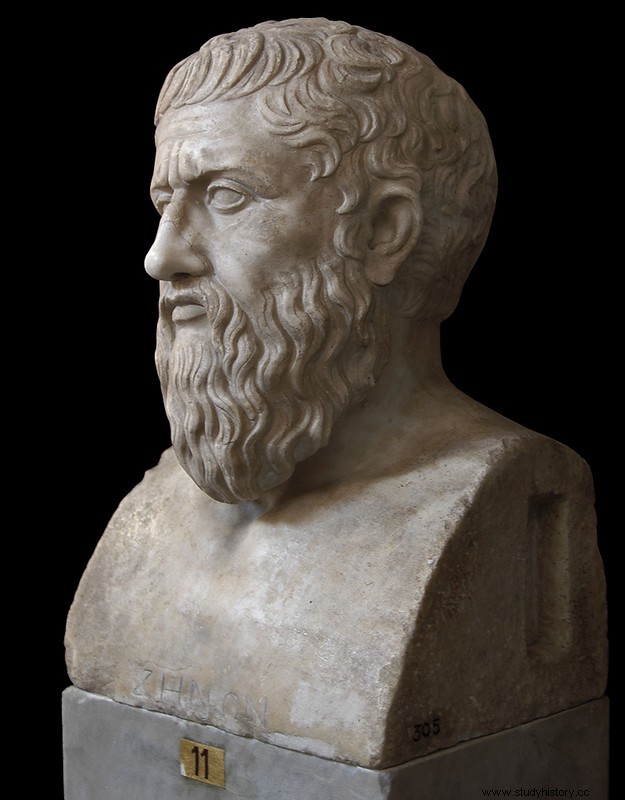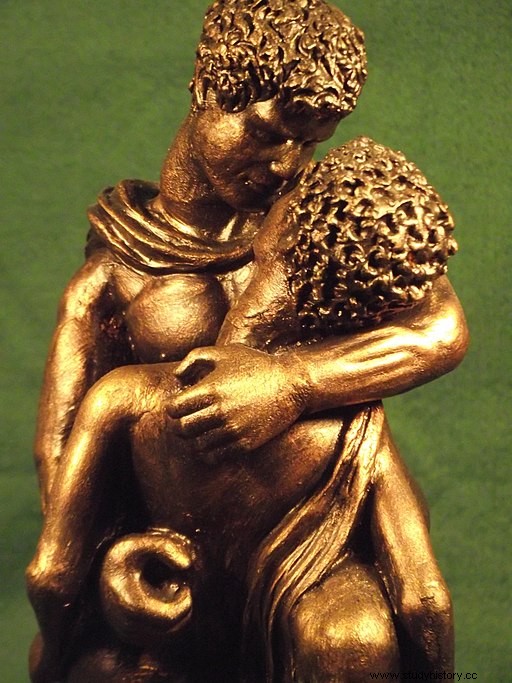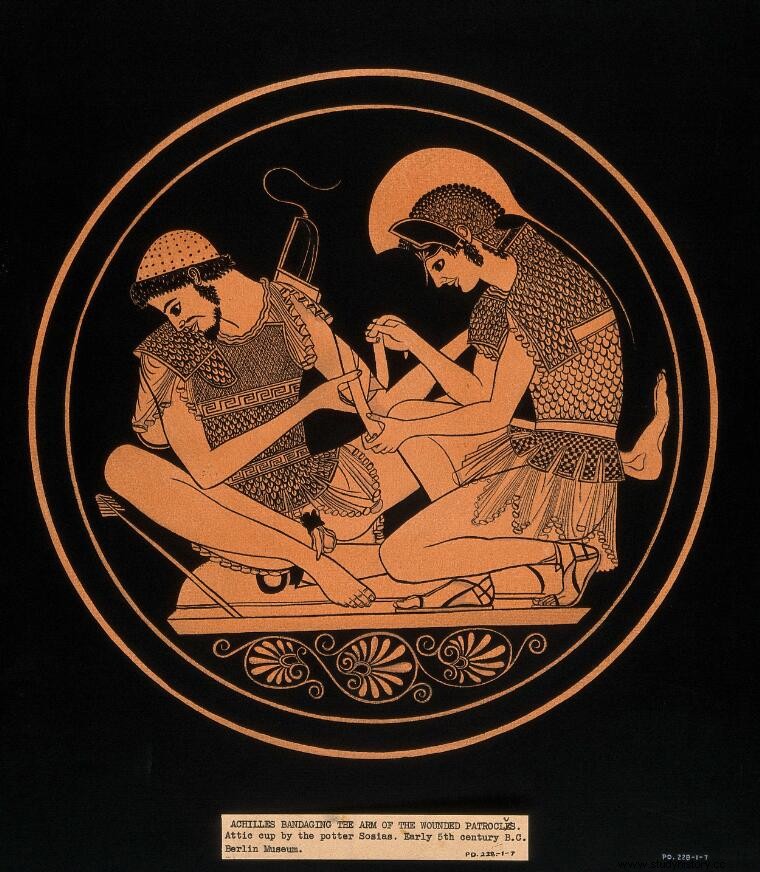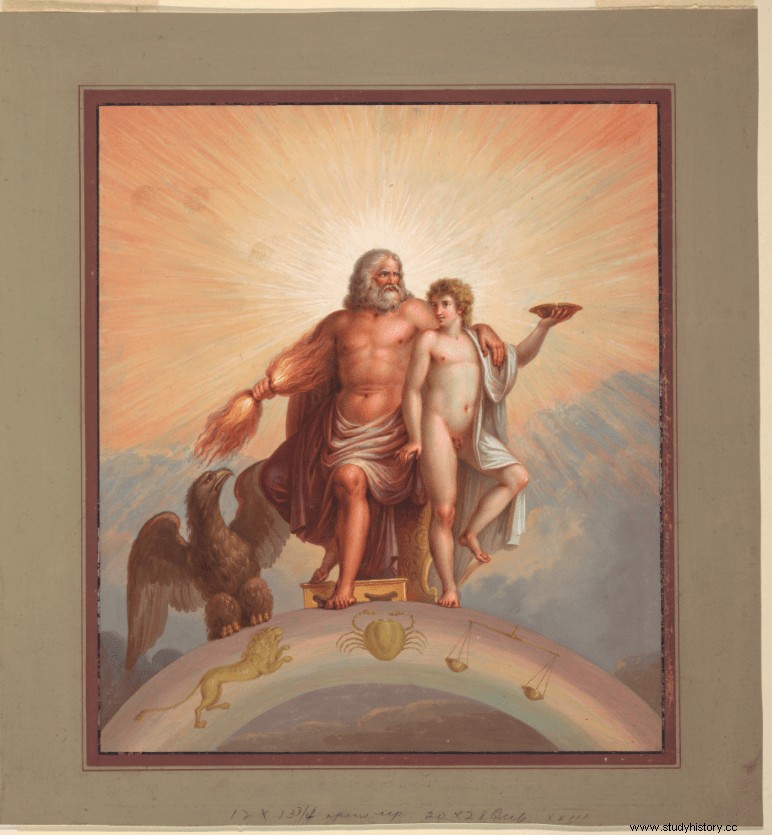For many people, the term "skewed myths" can bring thoughts of cross-border conspiracy theories or unrealistic stereotypes. In this case, the term is meant in a historical sense.
Ancient Greece has gained some reputation in recent years for society's relationship to homosexuality. Same-sex relationships did not suffer from the same narrowing taboos as the later periods of European history.
The central belief system of ancient Greece reflected this, with several myths and legends, including homosexual relationships or characters. This article has compiled an overview of some of the more well-known queer myths of this time period.
Before moving on to the myths, it is crucial to discuss same-sex relationships as they were in the daily life of the ancient Greeks.
Same-sex relationships in ancient Greece

Homosexuality in ancient Greece is a topic with sufficient depth to be its own essay. This section only serves as an overview. If you are interested in the queer history of Greece from ancient times to the present day, this article by another author on Yoair covers the subject in depth.)
Words like gays, lesbians, bisexuals, gays, etc. do not have a direct equivalent in ancient Greek. While concepts such as same-sex attraction have been around for thousands of years, these specific labels we use today are modern inventions.
What the ancient Greeks had, however, were different categories of same-sex relationships that varied both in how common it was and how society perceived it. These categories were:two adult women of the same age; two grown men of the same age; two women of different ages; two young men; and two men of different ages - typically youth and adult. Of these relationship categories, relationships with two men of different ages, known as the pederasty, were the most common.
In pederastry, the older partner would be over 20 years old, and the younger one would fall somewhere in the age group that we would consider a teenager in our time. This relationship served as both a romantic and mentoring. The older partner wanted to teach the younger ones about things like politics or society. While a relationship like this would raise serious alarm bells today (and with good reason!), The Greeks did not see it as exploitative. While these conditions would be subject to criticism or ridicule, there was little discussion about how harmful this practice may be to the younger partner.
Finally, it is important to note that myths in ancient Greece vary wildly. Unlike many modern religions, the ancient Greek religion did not have a unique source of written religious history and beliefs. Stories would change over time and vary further depending on the region the narrator hailed from. So, elements may not be consistent in all versions of a myth. This inconsistency only becomes more prevalent for queer myths, since later recordings will sometimes omit these elements due to homophobic biases.
Apollo and Hyacinthus

While there are many myths that Apollo chases beautiful women, both divine and mortal, he is also no stranger to the company of men.
Hyacinthus is Apollo's most famous male girlfriend. Hyacinthus' parents change depending on the version of the myth, but he is most often associated with spartan royalty. The beauty of the Spartan prince attracted the sun god to him, and the couple started a relationship.
One fateful day, however, Apollo taught Hyacinthus how to throw a discus. Apollo threw it with great force, and eager to impress the god Hyacinthus tried to capture it. The discus, however, struck Hyacinthus in the head, and the force Apollo had put behind the cast was enough to kill the mortal immediately. The god was in despair. In honor of his beloved, Apollo created a flower called hyacinthos from Spartan blood.
In other versions of the story, Hyacinth's death was not an accident. Zephyrus, the god of the westerly wind, had tried to capture the hyacinth. But the Spartan prince chose to pursue a relationship with Apollo instead. In a jealous rage, Zephyrus manipulated the wind direction when Apollo threw the discus so that it hit the unsuspecting Hyacinthus in the head.
Achilles and Patroclus

People have been discussing the relationship between Achilles and Patroclus since Homer first wrote the Iliad. For many readers, the band Warriors shares a clear romantic subtitle, though Homer never explicitly states so in the text of the Iliad. However, this interpretation has existed for thousands of years. Plato's symposium has a character that explicitly refers to the two heroes as lovers.
In the Iliad, Achilles is the son of Thetis, a sea nymph (known as the Nereid) and Peleus, the king of Myrmidons. With his incredible strength, he was the most fearsome warrior in the Greek army and an integral part of the war against Troy. During the ninth year of the war, the leader of the Greeks, Agamemnon, had a significant disagreement with Achilles and insulted the warrior. Regretted by the light, Achilles refused to fight any longer and remained inside his tent.
Almost immediately, Agamemnon's side began to lose the war. The Trojans pushed back the Greek forces and set fire to one of their boats. Patroclus came to Achilles, who nevertheless refused to return to the match. He was too stubborn to join without an apology from Agamemnon despite being worried about his fellow soldiers. Together with a man named Nestor, they come up with a plan. Patroclus wanted to wear Achilles' armor to increase morale and beat the tide of battle.
However, the plan ended in tragedy. Hector, a Trojan prince, kills Patroclus in battle. When the news of this came back to Achilles, he was despairing of grief and rage. Achilles joins the fight again and directs his anger at Hector. He confronted the Trojan prince in battle and killed him to avenge Patroclus. While the funeral rites of Patroclus were going on, his dead companion appeared in Achilles' dreams. He asked Achilles to bury his legs together when the other warrior died, so that they would never be apart again.
So while there is no mention of romance in Homer's famous version of the myth, the actions of Achilles before and after Patroclus' death fuel this fire of interpretation. The legend of Achilles and Patroclus has seen many variations by different writers over the centuries, and many bring that romance out of potential subtitles in the foreground.
Zeus and Ganymede

Zeus is notorious for his constant relationships with women, mortal and immortal, and how he will use false tricks to force himself on them. However, God also had eyes for men as well.
A remarkable example of this is the myth of Zeus and Ganymede, the son of King Troas of Troy. Ganymede was extraordinarily beautiful. His appearance is what made him catch Zeus' eyes. Zeus turned into an eagle and kidnapped the young man and carried him to heaven. Once there he made Ganymede immortal and gave him the position of bowl-bearer for the gods. To appease the Trojan father, Zeus Tros sent a gift - either immortal horses or a golden vine, depending on the version. Later retellings of the myth made Zeus' kidnapping of the mortals more explicitly driven by lust.
Zeus and Ganymede represent a pederastic relationship. Zeus assumes the older mentor role when he ascends Ganymede to immortality, while the prince assumes the younger mentee role. Suppose one were to look at this legend through a modern lens. In that case, the brushing of Ganymede's abduction may also be representative of the pederasty. Ancient Greek society did not seem to pay much attention to how these conditions affected the younger partner. In the same way, Zeus does not take into account Ganymede's opinions in the story.
Hermafroditus

The child of Hermes and Aphrodite, Hermaphroditus, was an immortal of striking appearance. According to the Roman poet Ovid in his work Metamorphoses, Hermaphroditus was traveling in the mortal world when he came across a beautiful lake. Unknown to him, a nymph named Salmacis lived in the water. She was amazed at the sight of his beauty and immediately fell in love. As Hermaphroditus swam in the sea, Salmacis forced himself on him. She prayed to the gods to unite the two forever. The gods answered her and united the couple into one being:half man and half woman.
The ancient Greeks did not consider Hermaphroditus to be an important figure to worship, but they often portrayed them in art. Usually, artists will paint them as a feminine figure with male genitals.
The term Hermaphrodite (which Merriam-Webster defines as "an animal or plant that has both male and female reproductive organs, structures or tissues") is derived from Hermaphroditus.
What makes these myths relevant?
Society should not seek to imitate the ancient Greeks - it is obvious. We have a much more nuanced understanding of how relationships between minors and adults can deeply hurt the younger partner. It would be dangerous to promote the idea of imitating or romanticizing the pederasty.
But these skewed myths are an important part of gay history. The stories and art of these Greek legends are some of the oldest known mentions of LGBTQ people. It is a deficient and dark chapter of the said story, but one that should be remembered and studied. Some people believe that the LGBTQ community grew up in the 20th century - but these stories and the centuries-old art that portray them are evidence to disprove the claim.
Queer myths (and the mythology of Greece and Rome in general) also played an important role in early gay literature. James Jenkins of Valancourt Books explains in an interview with HuffPost that mentions Greek and Roman mythology signaled gay themes or sympathies in novels. The knowledge that these civilizations were more open to same-sex relationships was common. References to the mythology of one of them will help to get books into the hands of LGBTQ readers, while still being subtle enough to protect the authors from criminal charges.
This chapter in LGBTQ history should not be placed on a pedestal or glorified. But the myths that date from this period are still worth discussing as relics from early queer stories and lives.
Resources and further reading
Sources for "Same-Sex Relationships in Ancient Greece"
Hubbard, Thomas K. "Historical Views on Homosexuality:Ancient Greece." Oxford Research Encyclopedia of Politics May 29, 2020, doi:10.1093 / acrefore / 9780190228637.013.1242.
Only the summary of Historical Views of Homosexuality:Ancient Greece was used as the source for this article.
Sources of the myths
"Hyacinthus." Encyclopædia Britannica , Encyclopædia Britannica, Inc., www.britica.com/topic/Hyacinthus.
Homer and Peter Green. Iliad . University of California Press, 2015. EBSCOhost , search-ebscohost-com.eztest.ocls.ca/login.aspx?direct=true&db=cat01001a&AN=algon.655851&site=eds-live&scope=site.
Sparknote editors. "The Iliad:Study Guide." SparkNotes , SparkNotes, 2005, www.sparknotes.com/lit/iliad/.
Hubbard, Thomas K. Homosexuality in Greece and Rome:A Sourcebook of Basic Documents . University of California Press, 2003. EBSCOhost , search-ebscohost-com.eztest.ocls.ca/login.aspx?direct=true&db=nlebk&AN=90501&site=eds-live&scope=site.
"Ganymede." Encyclopædia Britannica , Encyclopædia Britannica, Inc., www.britica.com/topic/Ganymede-Greek-mythology.
Hermafroditus and Salmacis. ” History Today , vol. 70, no. Nov 11 2020, pp. 4–5. EBSCOhost , search-ebscohost-com.eztest.ocls.ca/login.aspx?direct=true&db=a9h&AN=146566756&site=eds-live&scope=site.
"Hermaphroditus." Encyclopædia Britannica , Encyclopædia Britannica, Inc., www.britica.com/topic/Hermaphroditus.
